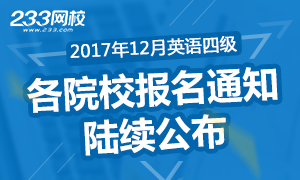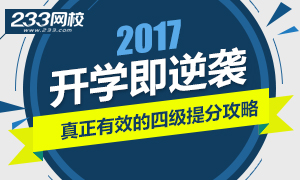歷年英語四級(jí)閱讀真題全解析(2002-2004)
- 第1頁:2002.1-Passageone
- 第2頁:2002.1-PassageTwo
- 第3頁:2002.1-PassageThree
- 第4頁:2002.1-PassageFour
- 第5頁:2002.6-Passage One
- 第6頁:2002.6-Passage Two
- 第7頁:2002.6-Passage Three
- 第8頁:2002.6-Passage Three
- 第9頁:2003.1-Passage One
Passage Four
Questions 36 to 40 are based on the following passage.
It’s no secret that many children would be healthier and happier with adoptive parents than with the parents that nature dealt them. That’s especially true of children who remain in abusive homes because the law blindly favors biological parents. It’s also true of children who suffer for years in foster homes (收養(yǎng)孩子的家庭) because of parents who can’t or won’t care for them but refuse to give up custody (監(jiān)護(hù)) rights.
Fourteen-year-old Kimberly Mays fits neither description, but her recent court victory could eventually help children who do. Kimberly has been the object of an angry custody baffle between the man who raised her and her biological parents, with whom she has never lived. A Florida judge ruled that the teenager can remain with the only father she’s ever known and that her biological parents have “no legal claim” on her.
The ruling, though it may yet be reversed, sets aside the principle that biology is the primary determinant of parentage. That’s an important development, one that’s long overdue.
Shortly after birth in December 1978, Kimberly Mays and another infant were mistakenly switched and sent home with the wrong parents. Kimberly’s biological parents, Ernest and Regina Twigg, received a child who died of a heart disease in 1988. Medical tests showed that the child wasn’t the Twiggs’ own daughter, but Kimt only was, thus sparking a custody battle with Robert Mays. In 1989, the two families agreed that Mr. Mays would maintain custody with the Twiggs getting visiting fights. Those rights were ended when Mr. Mays decided that Kimberly was being harmed.
The decision to leave Kimberly with Mr. Mays rendered her suit debated. But the judge made clear that Kimberly did have standing to sue (起訴) on her own behalf. Thus he made clear that she was more than just property to be handled as adults saw fit.
Certainly, the biological link between parent and child is fundamental. But biological parents aren’t always preferable to adoptive ones, and biological parentage does not convey an absolute ownership that cancels all the rights of children.
36. What was the primary consideration in the Florida judge’s ruling?
A) The biological link.
B) The child’s benefits.
C) The traditional practice.
D) The parents’ feelings.(B)
37. We can learn from the Kimberly case that ________.
A) children are more than just personal possessions of their parents
B) the biological link between parent and child should be emphasized
C) foster homes bring children more pain and suffering than care
D) biological parents shouldn’t claim custody rights after their child is adopted(D)
38. The Twiggs claimed custody rights to Kimberly because ________.
A) they found her unhappy in Mr. Mays’ custody
B) they regarded her as their property
C) they were her biological parents
D) they felt guilty about their past mistake(C)
39. Kimberly had been given to Mr. Mays ________.
A) by sheer accident
B) out of charity
C) at his request
D) for better care(C)
40. The author’s attitude towards the judge’s ruling could be described as ________.
A) doubtful
B) critical
C) cautious
D) supportive(A)
這篇材料講的是親生父母與養(yǎng)父母對(duì)孩子的優(yōu)先權(quán)利問題。段只是一個(gè)引篇,主要向人們傳達(dá)一個(gè)信息,即很多由養(yǎng)父母監(jiān)護(hù)下的孩子比親生父母照料下的孩子更加健康也更加快樂(healthier and happier with adoptive parents than with the parents that nature dealt them——deal做及物動(dòng)詞時(shí)是“給予”的意思)。而后舉了兩個(gè)例子加以說明。第二段開始進(jìn)入主題,介紹了Kimberly Mays的優(yōu)先監(jiān)護(hù)權(quán)的案例。
這一段呈現(xiàn)的信息包括Kimberly Mays的年齡,其養(yǎng)父母的情況(只有一個(gè)養(yǎng)父),生身父母的情況(從來未與其生活過,with whom she has never lived),以及案件的結(jié)果(繼續(xù)與養(yǎng)父生活,駁回親生父母的要求,remain with the only father she’s ever known and that her biological parents have “no legal claim” on her)。
下一段揭示了這一案件結(jié)果所蘊(yùn)含的意義:sets aside the principle that biology is the primary determinant of parentage. That’s an important development, one that’s long overdue,意思是它顛覆了生理聯(lián)系對(duì)家庭關(guān)系的首要決定作用,這是一項(xiàng)遲來的重要的進(jìn)展。
第四段把這個(gè)案件的始末詳細(xì)地?cái)⑹隽艘槐椤T缭?978年,Kimberly Mays與另外一個(gè)嬰兒被陰錯(cuò)陽差地互換了父母。另外一個(gè)孩子在1988年生病夭折,此時(shí)經(jīng)過測(cè)試才知道這個(gè)孩子不是Kimberly生父母的孩子。Kimberly生父母由此與其養(yǎng)父展開了一場(chǎng)爭奪監(jiān)護(hù)權(quán)的斗爭,后雙方達(dá)成協(xié)議,養(yǎng)父保留監(jiān)護(hù)權(quán),生父母有探望的權(quán)利;但養(yǎng)父若認(rèn)為生父母的探望使Kimberly受到了傷害,則該權(quán)利終止(Those rights were ended when Mr. Mays decided that Kimberly was being harmed)。
下一段是此案的一些后續(xù)描述,主要是法官對(duì)此案的相關(guān)解釋。點(diǎn)說明是Kimberly did have standing to sue on her own behalf Kimberly也有權(quán)為了自己的利益提起訴訟(比如,假設(shè)在生父母的經(jīng)濟(jì)狀況遠(yuǎn)好于養(yǎng)父的情況下)。第二點(diǎn)基于點(diǎn),說明賦予Kimberly這項(xiàng)權(quán)利的目的:她并不是大人們爭來搶去的財(cái)產(chǎn)(more than just property to be handled as adults saw fit)。
后一段總結(jié)這一案件的意義所在。首先是親生父母的監(jiān)護(hù)權(quán)并不總是優(yōu)先于養(yǎng)父母(biological parents aren’t always preferable to adoptive ones),其次是血緣關(guān)系并不意味著親生父母可以剝奪孩子全部的權(quán)利(biological parentage does not convey an absolute ownership that cancels all the rights of children)。
36. B
這道題問佛羅里達(dá)法官的判決首要依據(jù)什么考慮。
A,血緣關(guān)系。
B,孩子的利益。
C,傳統(tǒng)習(xí)慣。
D,父母的感受。
文章提到佛羅里達(dá)法官的判決是在第二段,判決的內(nèi)容是:A Florida judge ruled that the teenager can remain with the only father she’s ever known and that her biological parents have “no legal claim” on her,意思是當(dāng)事人可以繼續(xù)和養(yǎng)父生活在一起,而生身父母對(duì)她不享有合法權(quán)利。從判決本身看不出該判決的主要依據(jù)。
因?yàn)檫@是題,所以答案應(yīng)該到段去尋找。段句話就指出許多孩子和養(yǎng)父母生活會(huì)更健康和幸福(many children would be healthier and happier with adoptive parents than with the parents that nature dealt them),這句話有統(tǒng)領(lǐng)全文提綱的作用,應(yīng)該說全文內(nèi)容都和它有關(guān)。如果把法官的判決和這句話聯(lián)系起來的話,那么法官依據(jù)的只能是B的說法:孩子的利益(健康和幸福)。
關(guān)于A的說法,第三段已經(jīng)直截了當(dāng)?shù)胤穸耍簊ets aside the principle that biology is the primary determinant of parentage。
而C的說法在文中沒有提到,D的說法較為含混,沒有說明是養(yǎng)父母還是親生父母,本身就有問題。
37. D
題目問我們能從Kimberly的案子了解到什么。
A,孩子不僅僅是父母的個(gè)人財(cái)產(chǎn)。
B,父母和孩子的血緣關(guān)系應(yīng)該受到重視。
C,養(yǎng)父母帶給孩子的痛苦和折磨比關(guān)愛要多。
D,親生父母不應(yīng)在孩子被人領(lǐng)養(yǎng)后要求其監(jiān)護(hù)權(quán)。
題目沒有告訴我們是要考查哪一段,關(guān)鍵詞也不具有針對(duì)性,需要我們自己縮小搜索答案的范圍。全文一共6段,前兩段是大段,第三段為小段,而后是一個(gè)大段和兩個(gè)小段,可以說文章的重心在前面。這樣的話,本題作為第二題不可能去考查第四個(gè)大段的內(nèi)容。鑒于題考察內(nèi)容涉及段和第二段,本題考查第二三段的可能性大。
觀察第二段的內(nèi)容,可以說核心詞就是custody rights。第二句講的是兩個(gè)家庭如何展開監(jiān)護(hù)權(quán)戰(zhàn)爭,第三句講的是法官終判決親生父母不享有監(jiān)護(hù)權(quán)。
第三段是對(duì)法官這一判決的意義的探討,內(nèi)容依然是強(qiáng)調(diào)保護(hù)養(yǎng)父母的權(quán)利。
這樣看來,作者對(duì)Kimberly的案子的關(guān)注點(diǎn)完全在孩子的監(jiān)護(hù)權(quán)上。四個(gè)選項(xiàng)中提到這一點(diǎn)的只有D,所以應(yīng)該毫不猶豫地選擇D。
D的說法在文中存在直接的著落點(diǎn)。法官的判決中說到親生父母have “no legal claim” on her,即“沒有合法要求”,換句話說,就是對(duì)她的監(jiān)護(hù)權(quán)要求是非法的,也就是不應(yīng)要求監(jiān)護(hù)權(quán)。
38. C
題目問Twiggs夫婦要求對(duì)Kimberly的監(jiān)護(hù)權(quán),是因?yàn)椤?
A,他們發(fā)現(xiàn)她在Mays先生的監(jiān)護(hù)下過得并不快樂。
B,他們把她當(dāng)作自己的財(cái)產(chǎn)。
C,他們是她的親生父母。
D,他們對(duì)過去的過錯(cuò)感到內(nèi)疚。
這道題有一定難度,除了可以明確A的說法在文章中沒有提到之外,其余幾項(xiàng)都有一定的道理。而關(guān)鍵問題在于,文章本身實(shí)際上也沒有清晰地說明夫婦要求監(jiān)護(hù)權(quán)的原因。因此,本題只能借助于推斷。
B的說法在文中可以找到模糊的著落點(diǎn)。倒數(shù)第二段提到Thus he made clear that she was more than just property to be handled as adults saw fit,這里面出現(xiàn)了property一詞,如果對(duì)文意似懂非懂,很有可能會(huì)選擇這一項(xiàng)。這句話的意思是法官借此判決向人們傳達(dá)這樣一條信息:她不僅僅是大人肆意處置的對(duì)象。判決內(nèi)容是這個(gè)女孩可以為自己的利益自行提出起訴(Kimberly did have standing tosue on her own behalf),和Twiggs夫婦沒有關(guān)系。從文章的這句話可以看出,成不成為財(cái)產(chǎn)是從女孩的感受出發(fā),至于夫婦有沒有把女孩當(dāng)作財(cái)產(chǎn)是無法推斷的。因此可以排除B。
C的說法在文中也沒有直接的證據(jù),但可以找到多處相關(guān)點(diǎn)。首先,在第二段首次引出Kimberly案子的時(shí)候,作者就使用了biological parents這個(gè)詞組。第四段介紹夫婦如何錯(cuò)收了孩子,講到夫婦在得知孩子不是親生女兒后,立即與Mays先生展開監(jiān)護(hù)權(quán)的斗爭。從這個(gè)敘述的銜接順序,多少可以感覺到夫婦想要爭奪監(jiān)護(hù)權(quán)是因?yàn)榕畠菏撬麄冇H生的。此外,第三段和后一段是作者的議論,內(nèi)容都是親生父母對(duì)孩子的權(quán)利問題,可見文章核心思想與“親生”有關(guān),那么選擇C應(yīng)該是穩(wěn)妥的辦法。
至于D,從常理來說較為符合實(shí)際,但在文中始終找不到類似的描述,所以必須排除。
39. A
這道題問Kimberly被送給Mays先生是因?yàn)槭裁础?
A,僅僅是意外。
B,出于慈善目的。
C,在他的要求之下。
D,為了得到更好的照顧。
本題的難度在于理解題目的含義。對(duì)Kimberly歸于Mays的理解,可以有兩種:一是嬰兒時(shí)意外交換給了Mays,二是長大后法官將其判給Mays。
這道題流行的答案是C,可見是把題意理解為了第二種。而結(jié)合各種因素來看,本題的真實(shí)意思應(yīng)該是種。
首先,A選項(xiàng)by sheer accident很顯然是針對(duì)嬰孩互換說的。長大后孩子監(jiān)護(hù)權(quán)的歸屬是由法院判決的,不可能出現(xiàn)意外因素。出題者一般不會(huì)提供如此毫不相干的題支。
其次,題目中使用的謂語是be given to,give這個(gè)動(dòng)詞的意義較為寬泛,但相較于法庭判決,倒更像是說護(hù)士把孩子抱給了Mays。
第三,也是具說服力的一個(gè)理由是,題目所用的時(shí)態(tài)是過去完成時(shí)。可以對(duì)照一下前幾題 所使用的時(shí)態(tài),有關(guān)文章具體內(nèi)容的問題都是使用了一般過去時(shí),那么,本題如果所指的是法官的判決的話,沒有理由不繼續(xù)使用一般過去時(shí)。但本題使用的是過去 完成時(shí),說明該事件的發(fā)生要早于爭奪監(jiān)護(hù)權(quán)的事件,那么答案只有一個(gè),該事件就是孩子被抱錯(cuò)。
理解了題意之后,題目的解答就相對(duì)容易了。第四段開頭提到Kimberly Mays and another infant were mistakenly switched,這里的mistakenly直接對(duì)應(yīng)A中的accident,所以本題選擇A。
40. D
題目問作者對(duì)法官判決的態(tài)度可以描述為……
A,置疑。
B,批評(píng)。
C,謹(jǐn)慎。
D,支持。
法官的判決首次出現(xiàn)在第二段的末尾,此后的一段馬上對(duì)這一判決的意義進(jìn)行了評(píng)論,第四 段、第五段介紹的是案件的詳情,沒有涉及作者的議論,后一段作者再次出面議論判決的意義。所以,要判斷作者對(duì)法官判決的態(tài)度,需要理解第三段和后一 段。因?yàn)楸绢}是后一題,所以重點(diǎn)理解后一段就可以了。
后一段共兩句話。第二句以but開頭,可見兩句話的關(guān)系是轉(zhuǎn)折關(guān)系。在轉(zhuǎn)折關(guān)系中,重心在轉(zhuǎn)折后的內(nèi)容。
句指明父母之間的血緣關(guān)系是“基本的”,并以certainly起頭,表示這種情形屬于普遍情況。而后作者話鋒一轉(zhuǎn),指出親生父母并不總是優(yōu)先于養(yǎng)父母,而血緣關(guān)系也不代表對(duì)孩子的擁有、可以無視孩子的權(quán)利。
可以看出,第二句前半句是在肯定法官對(duì)監(jiān)護(hù)權(quán)歸屬養(yǎng)父的判決,后半句則肯定了法官對(duì)Kimberly有權(quán)為了自己的權(quán)利提起上訴的判決。所以說,作者的對(duì)法官判決的態(tài)度應(yīng)該是支持的。本題選擇D。
Questions 36 to 40 are based on the following passage.
It’s no secret that many children would be healthier and happier with adoptive parents than with the parents that nature dealt them. That’s especially true of children who remain in abusive homes because the law blindly favors biological parents. It’s also true of children who suffer for years in foster homes (收養(yǎng)孩子的家庭) because of parents who can’t or won’t care for them but refuse to give up custody (監(jiān)護(hù)) rights.
Fourteen-year-old Kimberly Mays fits neither description, but her recent court victory could eventually help children who do. Kimberly has been the object of an angry custody baffle between the man who raised her and her biological parents, with whom she has never lived. A Florida judge ruled that the teenager can remain with the only father she’s ever known and that her biological parents have “no legal claim” on her.
The ruling, though it may yet be reversed, sets aside the principle that biology is the primary determinant of parentage. That’s an important development, one that’s long overdue.
Shortly after birth in December 1978, Kimberly Mays and another infant were mistakenly switched and sent home with the wrong parents. Kimberly’s biological parents, Ernest and Regina Twigg, received a child who died of a heart disease in 1988. Medical tests showed that the child wasn’t the Twiggs’ own daughter, but Kimt only was, thus sparking a custody battle with Robert Mays. In 1989, the two families agreed that Mr. Mays would maintain custody with the Twiggs getting visiting fights. Those rights were ended when Mr. Mays decided that Kimberly was being harmed.
The decision to leave Kimberly with Mr. Mays rendered her suit debated. But the judge made clear that Kimberly did have standing to sue (起訴) on her own behalf. Thus he made clear that she was more than just property to be handled as adults saw fit.
Certainly, the biological link between parent and child is fundamental. But biological parents aren’t always preferable to adoptive ones, and biological parentage does not convey an absolute ownership that cancels all the rights of children.
36. What was the primary consideration in the Florida judge’s ruling?
A) The biological link.
B) The child’s benefits.
C) The traditional practice.
D) The parents’ feelings.(B)
37. We can learn from the Kimberly case that ________.
A) children are more than just personal possessions of their parents
B) the biological link between parent and child should be emphasized
C) foster homes bring children more pain and suffering than care
D) biological parents shouldn’t claim custody rights after their child is adopted(D)
38. The Twiggs claimed custody rights to Kimberly because ________.
A) they found her unhappy in Mr. Mays’ custody
B) they regarded her as their property
C) they were her biological parents
D) they felt guilty about their past mistake(C)
39. Kimberly had been given to Mr. Mays ________.
A) by sheer accident
B) out of charity
C) at his request
D) for better care(C)
40. The author’s attitude towards the judge’s ruling could be described as ________.
A) doubtful
B) critical
C) cautious
D) supportive(A)
這篇材料講的是親生父母與養(yǎng)父母對(duì)孩子的優(yōu)先權(quán)利問題。段只是一個(gè)引篇,主要向人們傳達(dá)一個(gè)信息,即很多由養(yǎng)父母監(jiān)護(hù)下的孩子比親生父母照料下的孩子更加健康也更加快樂(healthier and happier with adoptive parents than with the parents that nature dealt them——deal做及物動(dòng)詞時(shí)是“給予”的意思)。而后舉了兩個(gè)例子加以說明。第二段開始進(jìn)入主題,介紹了Kimberly Mays的優(yōu)先監(jiān)護(hù)權(quán)的案例。
這一段呈現(xiàn)的信息包括Kimberly Mays的年齡,其養(yǎng)父母的情況(只有一個(gè)養(yǎng)父),生身父母的情況(從來未與其生活過,with whom she has never lived),以及案件的結(jié)果(繼續(xù)與養(yǎng)父生活,駁回親生父母的要求,remain with the only father she’s ever known and that her biological parents have “no legal claim” on her)。
下一段揭示了這一案件結(jié)果所蘊(yùn)含的意義:sets aside the principle that biology is the primary determinant of parentage. That’s an important development, one that’s long overdue,意思是它顛覆了生理聯(lián)系對(duì)家庭關(guān)系的首要決定作用,這是一項(xiàng)遲來的重要的進(jìn)展。
第四段把這個(gè)案件的始末詳細(xì)地?cái)⑹隽艘槐椤T缭?978年,Kimberly Mays與另外一個(gè)嬰兒被陰錯(cuò)陽差地互換了父母。另外一個(gè)孩子在1988年生病夭折,此時(shí)經(jīng)過測(cè)試才知道這個(gè)孩子不是Kimberly生父母的孩子。Kimberly生父母由此與其養(yǎng)父展開了一場(chǎng)爭奪監(jiān)護(hù)權(quán)的斗爭,后雙方達(dá)成協(xié)議,養(yǎng)父保留監(jiān)護(hù)權(quán),生父母有探望的權(quán)利;但養(yǎng)父若認(rèn)為生父母的探望使Kimberly受到了傷害,則該權(quán)利終止(Those rights were ended when Mr. Mays decided that Kimberly was being harmed)。
下一段是此案的一些后續(xù)描述,主要是法官對(duì)此案的相關(guān)解釋。點(diǎn)說明是Kimberly did have standing to sue on her own behalf Kimberly也有權(quán)為了自己的利益提起訴訟(比如,假設(shè)在生父母的經(jīng)濟(jì)狀況遠(yuǎn)好于養(yǎng)父的情況下)。第二點(diǎn)基于點(diǎn),說明賦予Kimberly這項(xiàng)權(quán)利的目的:她并不是大人們爭來搶去的財(cái)產(chǎn)(more than just property to be handled as adults saw fit)。
后一段總結(jié)這一案件的意義所在。首先是親生父母的監(jiān)護(hù)權(quán)并不總是優(yōu)先于養(yǎng)父母(biological parents aren’t always preferable to adoptive ones),其次是血緣關(guān)系并不意味著親生父母可以剝奪孩子全部的權(quán)利(biological parentage does not convey an absolute ownership that cancels all the rights of children)。
36. B
這道題問佛羅里達(dá)法官的判決首要依據(jù)什么考慮。
A,血緣關(guān)系。
B,孩子的利益。
C,傳統(tǒng)習(xí)慣。
D,父母的感受。
文章提到佛羅里達(dá)法官的判決是在第二段,判決的內(nèi)容是:A Florida judge ruled that the teenager can remain with the only father she’s ever known and that her biological parents have “no legal claim” on her,意思是當(dāng)事人可以繼續(xù)和養(yǎng)父生活在一起,而生身父母對(duì)她不享有合法權(quán)利。從判決本身看不出該判決的主要依據(jù)。
因?yàn)檫@是題,所以答案應(yīng)該到段去尋找。段句話就指出許多孩子和養(yǎng)父母生活會(huì)更健康和幸福(many children would be healthier and happier with adoptive parents than with the parents that nature dealt them),這句話有統(tǒng)領(lǐng)全文提綱的作用,應(yīng)該說全文內(nèi)容都和它有關(guān)。如果把法官的判決和這句話聯(lián)系起來的話,那么法官依據(jù)的只能是B的說法:孩子的利益(健康和幸福)。
關(guān)于A的說法,第三段已經(jīng)直截了當(dāng)?shù)胤穸耍簊ets aside the principle that biology is the primary determinant of parentage。
而C的說法在文中沒有提到,D的說法較為含混,沒有說明是養(yǎng)父母還是親生父母,本身就有問題。
37. D
題目問我們能從Kimberly的案子了解到什么。
A,孩子不僅僅是父母的個(gè)人財(cái)產(chǎn)。
B,父母和孩子的血緣關(guān)系應(yīng)該受到重視。
C,養(yǎng)父母帶給孩子的痛苦和折磨比關(guān)愛要多。
D,親生父母不應(yīng)在孩子被人領(lǐng)養(yǎng)后要求其監(jiān)護(hù)權(quán)。
題目沒有告訴我們是要考查哪一段,關(guān)鍵詞也不具有針對(duì)性,需要我們自己縮小搜索答案的范圍。全文一共6段,前兩段是大段,第三段為小段,而后是一個(gè)大段和兩個(gè)小段,可以說文章的重心在前面。這樣的話,本題作為第二題不可能去考查第四個(gè)大段的內(nèi)容。鑒于題考察內(nèi)容涉及段和第二段,本題考查第二三段的可能性大。
觀察第二段的內(nèi)容,可以說核心詞就是custody rights。第二句講的是兩個(gè)家庭如何展開監(jiān)護(hù)權(quán)戰(zhàn)爭,第三句講的是法官終判決親生父母不享有監(jiān)護(hù)權(quán)。
第三段是對(duì)法官這一判決的意義的探討,內(nèi)容依然是強(qiáng)調(diào)保護(hù)養(yǎng)父母的權(quán)利。
這樣看來,作者對(duì)Kimberly的案子的關(guān)注點(diǎn)完全在孩子的監(jiān)護(hù)權(quán)上。四個(gè)選項(xiàng)中提到這一點(diǎn)的只有D,所以應(yīng)該毫不猶豫地選擇D。
D的說法在文中存在直接的著落點(diǎn)。法官的判決中說到親生父母have “no legal claim” on her,即“沒有合法要求”,換句話說,就是對(duì)她的監(jiān)護(hù)權(quán)要求是非法的,也就是不應(yīng)要求監(jiān)護(hù)權(quán)。
38. C
題目問Twiggs夫婦要求對(duì)Kimberly的監(jiān)護(hù)權(quán),是因?yàn)椤?
A,他們發(fā)現(xiàn)她在Mays先生的監(jiān)護(hù)下過得并不快樂。
B,他們把她當(dāng)作自己的財(cái)產(chǎn)。
C,他們是她的親生父母。
D,他們對(duì)過去的過錯(cuò)感到內(nèi)疚。
這道題有一定難度,除了可以明確A的說法在文章中沒有提到之外,其余幾項(xiàng)都有一定的道理。而關(guān)鍵問題在于,文章本身實(shí)際上也沒有清晰地說明夫婦要求監(jiān)護(hù)權(quán)的原因。因此,本題只能借助于推斷。
B的說法在文中可以找到模糊的著落點(diǎn)。倒數(shù)第二段提到Thus he made clear that she was more than just property to be handled as adults saw fit,這里面出現(xiàn)了property一詞,如果對(duì)文意似懂非懂,很有可能會(huì)選擇這一項(xiàng)。這句話的意思是法官借此判決向人們傳達(dá)這樣一條信息:她不僅僅是大人肆意處置的對(duì)象。判決內(nèi)容是這個(gè)女孩可以為自己的利益自行提出起訴(Kimberly did have standing tosue on her own behalf),和Twiggs夫婦沒有關(guān)系。從文章的這句話可以看出,成不成為財(cái)產(chǎn)是從女孩的感受出發(fā),至于夫婦有沒有把女孩當(dāng)作財(cái)產(chǎn)是無法推斷的。因此可以排除B。
C的說法在文中也沒有直接的證據(jù),但可以找到多處相關(guān)點(diǎn)。首先,在第二段首次引出Kimberly案子的時(shí)候,作者就使用了biological parents這個(gè)詞組。第四段介紹夫婦如何錯(cuò)收了孩子,講到夫婦在得知孩子不是親生女兒后,立即與Mays先生展開監(jiān)護(hù)權(quán)的斗爭。從這個(gè)敘述的銜接順序,多少可以感覺到夫婦想要爭奪監(jiān)護(hù)權(quán)是因?yàn)榕畠菏撬麄冇H生的。此外,第三段和后一段是作者的議論,內(nèi)容都是親生父母對(duì)孩子的權(quán)利問題,可見文章核心思想與“親生”有關(guān),那么選擇C應(yīng)該是穩(wěn)妥的辦法。
至于D,從常理來說較為符合實(shí)際,但在文中始終找不到類似的描述,所以必須排除。
39. A
這道題問Kimberly被送給Mays先生是因?yàn)槭裁础?
A,僅僅是意外。
B,出于慈善目的。
C,在他的要求之下。
D,為了得到更好的照顧。
本題的難度在于理解題目的含義。對(duì)Kimberly歸于Mays的理解,可以有兩種:一是嬰兒時(shí)意外交換給了Mays,二是長大后法官將其判給Mays。
這道題流行的答案是C,可見是把題意理解為了第二種。而結(jié)合各種因素來看,本題的真實(shí)意思應(yīng)該是種。
首先,A選項(xiàng)by sheer accident很顯然是針對(duì)嬰孩互換說的。長大后孩子監(jiān)護(hù)權(quán)的歸屬是由法院判決的,不可能出現(xiàn)意外因素。出題者一般不會(huì)提供如此毫不相干的題支。
其次,題目中使用的謂語是be given to,give這個(gè)動(dòng)詞的意義較為寬泛,但相較于法庭判決,倒更像是說護(hù)士把孩子抱給了Mays。
第三,也是具說服力的一個(gè)理由是,題目所用的時(shí)態(tài)是過去完成時(shí)。可以對(duì)照一下前幾題 所使用的時(shí)態(tài),有關(guān)文章具體內(nèi)容的問題都是使用了一般過去時(shí),那么,本題如果所指的是法官的判決的話,沒有理由不繼續(xù)使用一般過去時(shí)。但本題使用的是過去 完成時(shí),說明該事件的發(fā)生要早于爭奪監(jiān)護(hù)權(quán)的事件,那么答案只有一個(gè),該事件就是孩子被抱錯(cuò)。
理解了題意之后,題目的解答就相對(duì)容易了。第四段開頭提到Kimberly Mays and another infant were mistakenly switched,這里的mistakenly直接對(duì)應(yīng)A中的accident,所以本題選擇A。
40. D
題目問作者對(duì)法官判決的態(tài)度可以描述為……
A,置疑。
B,批評(píng)。
C,謹(jǐn)慎。
D,支持。
法官的判決首次出現(xiàn)在第二段的末尾,此后的一段馬上對(duì)這一判決的意義進(jìn)行了評(píng)論,第四 段、第五段介紹的是案件的詳情,沒有涉及作者的議論,后一段作者再次出面議論判決的意義。所以,要判斷作者對(duì)法官判決的態(tài)度,需要理解第三段和后一 段。因?yàn)楸绢}是后一題,所以重點(diǎn)理解后一段就可以了。
后一段共兩句話。第二句以but開頭,可見兩句話的關(guān)系是轉(zhuǎn)折關(guān)系。在轉(zhuǎn)折關(guān)系中,重心在轉(zhuǎn)折后的內(nèi)容。
句指明父母之間的血緣關(guān)系是“基本的”,并以certainly起頭,表示這種情形屬于普遍情況。而后作者話鋒一轉(zhuǎn),指出親生父母并不總是優(yōu)先于養(yǎng)父母,而血緣關(guān)系也不代表對(duì)孩子的擁有、可以無視孩子的權(quán)利。
可以看出,第二句前半句是在肯定法官對(duì)監(jiān)護(hù)權(quán)歸屬養(yǎng)父的判決,后半句則肯定了法官對(duì)Kimberly有權(quán)為了自己的權(quán)利提起上訴的判決。所以說,作者的對(duì)法官判決的態(tài)度應(yīng)該是支持的。本題選擇D。
相關(guān)推薦
課程免費(fèi)試聽
| ?γ??????? | ??? | ???/???? | ??????? | ???? |
|---|---|---|---|---|
| ????????????????????????????????? | ????? | ??100 / ??100 |  |
???? |
| ???????????????????????? | ????? | ??100 / ??100 |  |
???? |
| ???????????????????????? | ????? | ??100 / ??100 |  |
???? |
| ??????????????????д???? | ????? | ??100 / ??100 |  |
???? |
熱點(diǎn)專題
????0??????
????????????????







